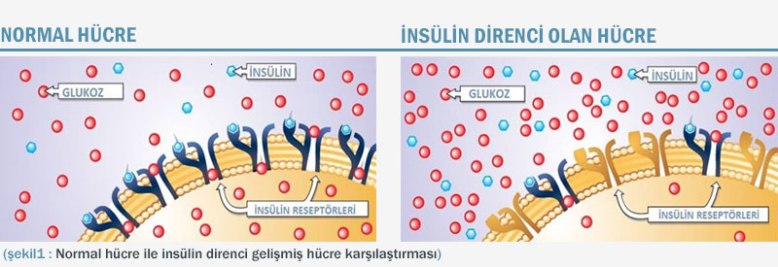Insulin resistance is one of the health problems that have been on the agenda much more frequently recently… Especially the fact that it prevents weight loss is one of the reasons why it attracts attention. Here are 5 things you should know about insulin resistance.
What is Insulin Resistance?
Insulin is a hormone that acts as a switch in cells. Binds to receptors on the cell membrane, allowing glucose to enter the cell. After eating, the food is digested and broken down into glucose, which enters the cell thanks to insulin. In some cases, there may be a problem at the site where insulin binds to the receptor or there may be a problem with the transmission inside the cell. In these cases, no matter how much insulin the body synthesizes, glucose in the blood cannot be taken into the cells and causes blood sugar to rise.
High levels of sugar in the blood can cause toxic effects, many different harms and even death if not monitored. For many reasons, sometimes cells do not respond to insulin as they should. In other words, cells become resistant to insulin. When this happens, the pancreas starts to produce too much insulin to reduce blood sugar levels and this causes high levels of insulin in the blood, which is called hyperinsulinemia.

What are the Symptoms?
Insulin resistance may not always give very clear symptoms. But in general, among the symptoms; there are skin problems. Dark spots can be seen especially on the neck, armpits, groin and inside the joints. Rapid hunger after meals, imbalances in blood sugar, sweet tooth, difficulty in losing weight and especially abdominal fat are also indicators of insulin resistance. Type 2 diabetes affects 9% of the world and insulin resistance is the root cause of this common disease.

What to Do to Reduce Risk
The unchangeable factor for the risk of insulin resistance is, as you might expect, genetics. If there is a family history of diabetes, this is a risk factor for insulin resistance. But there are also modifiable factors. Being overweight, not getting enough exercise, high blood pressure and smoking can increase the risk of insulin resistance. It is up to you to eliminate these factors.

What Does It Cause?
If insulin resistance is left unchecked, it can develop over time and cells become more and more resistant to insulin and both insulin and blood glucose levels increase. Eventually, the pancreas can become dysfunctional and the cells within the pancreas can be damaged. This leads to reduced insulin production, meaning that there is little insulin and cells that do not respond to the little insulin that is left. This can cause rapid spikes in blood sugar levels. If the blood sugar level exceeds a certain limit, type 2 diabetes is diagnosed. Type 2 diabetes affects 9% of the world and insulin resistance is the root cause of this common disease.
How to Eat?
The first rule that individuals with insulin resistance should pay attention to in their diet is to avoid simple sugar and foods containing simple sugar. These individuals should take care not to consume carbohydrate-containing foods alone, and add protein-containing foods such as milk / yogurt / cheese or almonds / hazelnuts / walnuts that can help control blood sugar. It is also important not to starve for too long.
Fruits themselves should be consumed instead of their juice, whole wheat and rye bread should be preferred instead of white bread, and bulgur should be preferred instead of rice. Whole grains and legumes 2-3 times a week are also important. Nevertheless, there is no single correct and single nutrition program for individuals with insulin resistance, I recommend that you consult a nutritionist for the most accurate nutrition program.

